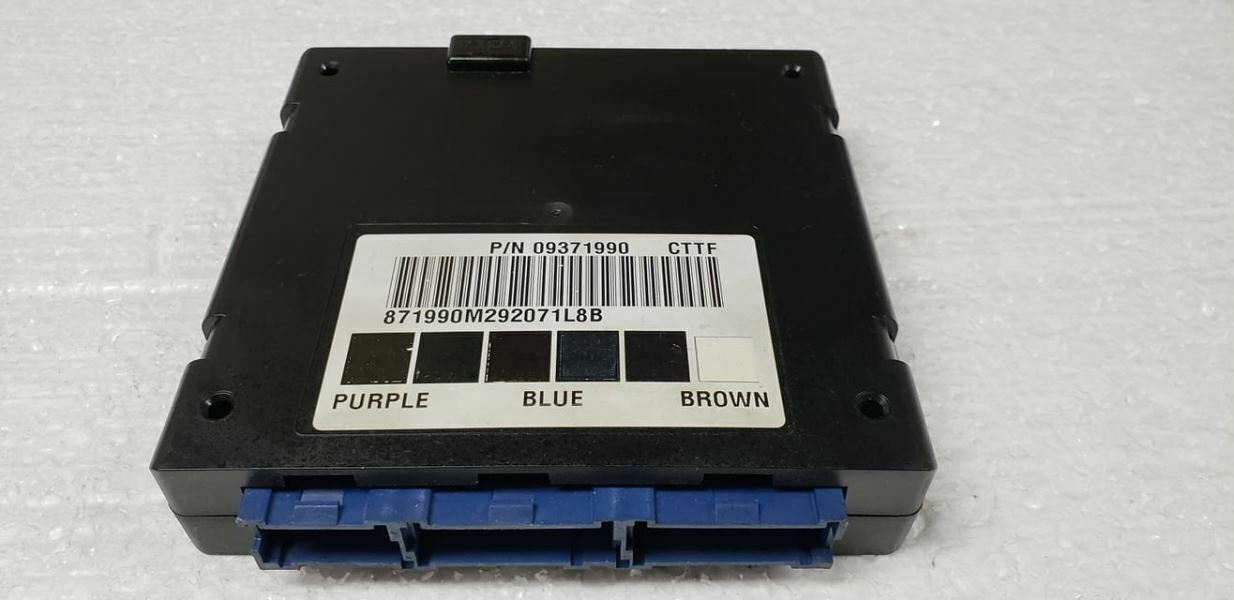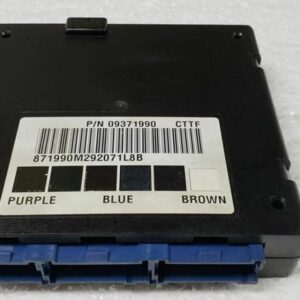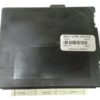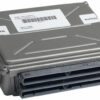Are you tired of dealing with the bizarre electrical problems in your 2001 Chevy Blazer, GMC Jimmy, or another compatible GM truck? Flickering lights, power windows with a mind of their own, or a security light that keeps you from starting your vehicle are all classic signs of a failing Body Control Module (BCM). As the nerve center for your truck’s body electronics, when the BCM goes bad, it can make your reliable vehicle feel possessed. This isn’t just an annoyance; it’s a matter of function and safety. Stop chasing electrical gremlins and get the definitive solution.
We offer a professionally prepared Body Control Module that arrives at your door programmed to your vehicle’s specific VIN. We load it with the latest GM software updates, which often correct factory flaws and improve performance. This means you can bypass the expensive dealership visit for programming. This is the most direct and reliable way to restore your vehicle’s essential functions.
Case Study: A Tricky Diagnosis
A customer brought in a 2001 GMC Jimmy that would intermittently fail to start, with the security light flashing on the dash. They had already replaced the battery and ignition switch with no luck. In my diagnostic bay, I connected my scan tool and found multiple communication loss codes (U-codes) pointing to the BCM. Instead of just swapping the part, I checked the power and ground feeds to the module—they were solid. This confirmed the BCM itself was the source of the failure, likely due to internal solder joint cracks from years of heat cycles. Installing a pre-programmed BCM like this one resolved all issues instantly, saving the customer from further guesswork and expense.
Is Your GM Truck Showing These Symptoms?
A failing BCM can cause a wide range of confusing issues. If you’re experiencing any of the following, this module is likely the solution you need:
- ✔ Erratic power windows, door locks, or interior lights
- ✔ The security or anti-theft light stays on, preventing the engine from starting
- ✔ Horn honking unexpectedly or not working at all
- ✔ Dashboard warning lights appearing for no reason
- ✔ Communication loss codes (like U1000) or BCM-specific codes (like B1001) stored in the system
- ✔ Wipers operating intermittently or not parking correctly
Your Straightforward BCM Installation Guide
Replacing the BCM is a manageable job for a DIYer with basic tools. Follow these steps to get your truck back in order.
- Safety First: Always disconnect the negative terminal from your vehicle’s battery and wait 10-15 minutes before starting work.
- Locate the BCM: On the 2001 Blazer/Jimmy/S10/Bravada, the BCM is typically located in the center dash area, often accessible by removing the lower dash panel or glove box. On full-size trucks and vans, it’s usually on the left-hand (driver’s) side behind the lower dash panel.
- Disconnect and Remove: Carefully unplug the electrical connectors. They have locking tabs that need to be depressed. Once disconnected, unbolt or unclip the old module from its mounting bracket.
- Install the New Module: Seat your new, pre-programmed BCM onto the mounting bracket and securely plug in all the electrical connectors. You should hear a ‘click’ as they lock into place.
- Reconnect and Test: Reconnect the negative battery terminal. Turn the key to the ‘On’ position and test all body functions—windows, locks, lights, wipers, etc.—to confirm the repair.
Important Post-Installation Information
Because this module is central to many systems, a couple of additional steps may be required after installation, depending on your specific vehicle:
- Airbag System Sync: If the airbag warning light is illuminated after installation, it means the new BCM needs to be synced with the airbag’s Sensing and Diagnostic Module (SDM). A professional scan tool is required to perform the ‘Setup SDM Primary Key in BCM’ procedure to clear the light.
- Brake Pedal Position Relearn: On some models, a brake pedal position sensor recalibration might be necessary. This ensures your brake lights and traction control system function correctly. This also requires a capable diagnostic tool.
Disclaimer: Always consult a factory service manual or a qualified technician if you are unsure about any part of the installation or post-install procedures.
Verified Vehicle Compatibility
This Body Control Module is a direct replacement for units with service numbers 19208539, 9371990, or 9385236. It is guaranteed to fit the following makes and models:
- 2001 Astro Van (LH dash)
- 2001 Blazer S10 / Jimmy S15 (center dash)
- 2001 Bravada (center dash)
- 2001 S10 / S15 / Sonoma Pickup (center dash)
- 2001 Safari (GMC) (LH dash)
- 2000 Silverado 1500 / 2500 Pickup (LH dash)
- 2000 Sierra 1500 / 2500 Pickup (LH dash)
- 2000 Suburban 1500 / 2500 (LH dash)
- 2000 Tahoe / Yukon (exc. Denali) (LH dash)
- 2000 Yukon XL 1500 / 2500 (LH dash)
Frequently Asked Questions
Why do you need my VIN?
Your Vehicle Identification Number (VIN) allows us to program the BCM with the exact software and settings for your truck’s specific options. This ensures it works correctly right out of the box, saving you a trip to the dealer.
Is this part difficult to install?
The physical replacement is straightforward for most DIYers with basic tools. As it comes pre-programmed, the most complex part is eliminated. However, be aware that some vehicles may require additional sync procedures with a scan tool for the airbag or brake systems, as noted above.
Will this fix my ‘Security’ light and no-start problem?
In the vast majority of cases, yes. The BCM is a critical part of the Passlock anti-theft system on these GM vehicles. A faulty BCM is the most common cause of a persistent security light and the resulting no-start condition.
Do I have to send my old BCM back?
No. This purchase requires no core charge. You can keep your original module.
What makes this better than a used part from a junkyard?
A used BCM will be programmed for a different vehicle and will not work in yours without being reprogrammed. Our module is not only programmed specifically for your VIN but is also loaded with the latest GM software, ensuring reliability and correcting potential factory bugs.



